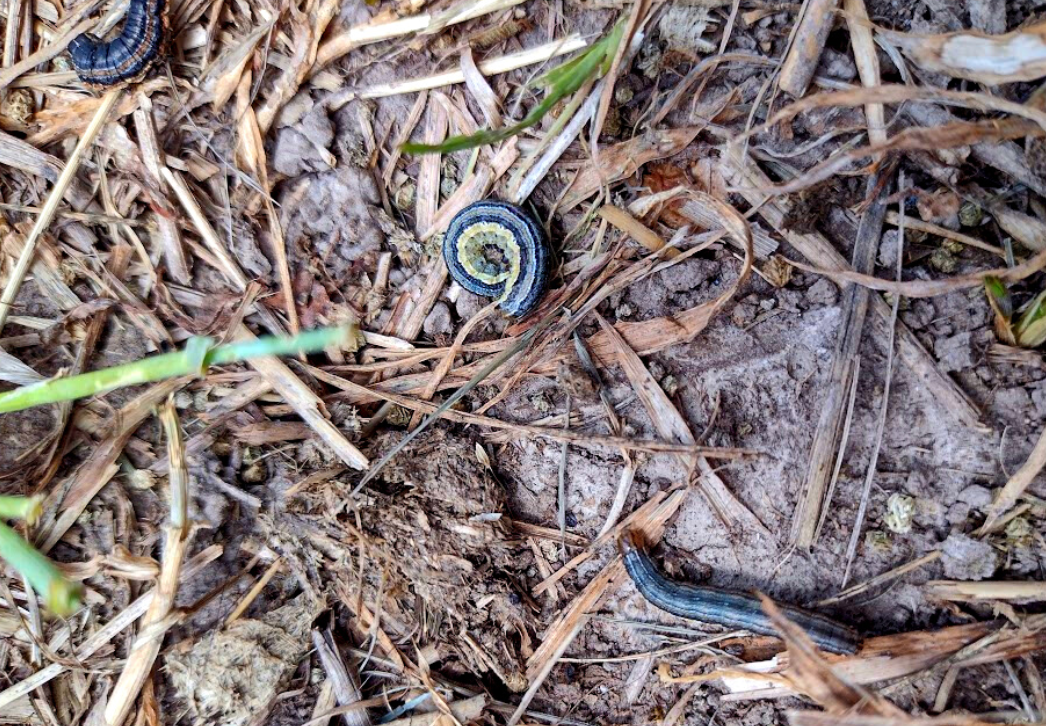|
Cooler weather arrived in Wisconsin with the passage of a weekend cold front. The front on June 10 brought isolated thunderstorms and urgently needed rain to much of the state, with the highest totals of 0.5-2.0 inches recorded in the north-central and northeastern regions. Temperatures plummeted overnight on Saturday, and the remainder of the week was mostly dry.
Alfalfa harvesting, orchard pest control, soybean planting, and herbicide applications continued under hazy skies from wildfire smoke. The pace of soybean planting has been rapid this season. Progress was seven days ahead of the long-term average and five days ahead of last year at the start of the week, with 98 percent of intended soybean acres sown.
Meanwhile, condition ratings for crops declined for the third straight week due to insufficient rain. Topsoil moisture is currently short or very short for 75 percent of the state’s croplands, and the latest extended weather outlook shows a likelihood of above-normal temperatures and below-normal precipitation for the latter half of the month.
 True armyworm larva | K. Hamilton DATCP
  Damaging, locally heavy populations of first-generation true armyworm larvae have been observed in southwestern Wisconsin in the past week. As is often the case with the true armyworm, the infestations have been scattered and varied in terms of severity.
A report from Extension Crops and Soils Educator Josh Kamps received June 14 states that, “We are experiencing a true armyworm problem primarily in lush pasture grasses, with larvae moving into nearby corn and grass-mix hay fields.” He adds that forage damage has been confirmed in the Highland area of western Iowa County, near Darlington in central Lafayette County, and in southern Grant County.
In addition, a native plant nursery near Brodhead in Green County reported that a 20-acre field of Virginia wild rye (Elymus virginicus) was completely defoliated by armyworms this week. Destructive feeding by armyworm larvae has also been noted in riparian areas along roadways.
DATCP surveys in wheat fields from Dane County northeast to Winnebago County indicate that larvae are present in most fields, although the counts recorded to date have been well below economically significant levels. Numbers of armyworm caterpillars collected at sites in Dane, Dodge, Fond du Lac, Sheboygan, and Winnebago counties ranged from 1-8 per 100 sweeps and averaged only two per 100 sweeps.
 True armyworms in pasture | Josh Kamps UW
Armyworm outbreaks occur in an irregular geographical pattern and are difficult to accurately predict, making scouting and early detection of developing problems imperative. Any decision to treat armyworm infestations should be based on the size and abundance of the larvae, and not the extent of the current damage. Larvae in southwestern Wisconsin were generally in the third to fifth instars as of June 15, while those collected in sweep nets in the east-central area were smaller and in the first to fourth instar development stage.
In corn fields, sampling five sets of 20 plants (100 total) for armyworms and signs of feeding is required. Spot treatment is acceptable for infestations of two or more armyworms (3/4 to 1 inch or smaller) per plant on 25% of the plants, or one worm per plant on 75% of the plants. Treating small grains is suggested for levels of three or more armyworms per square foot, though much of the small grains acreage is approaching maturity. Producers and advisors are reminded to cross check PHIs to make sure that the insecticide aligns with harvest plans. At the very least, increased scouting of corn, small grains, and other susceptible crops should be prioritized in the week ahead.
|